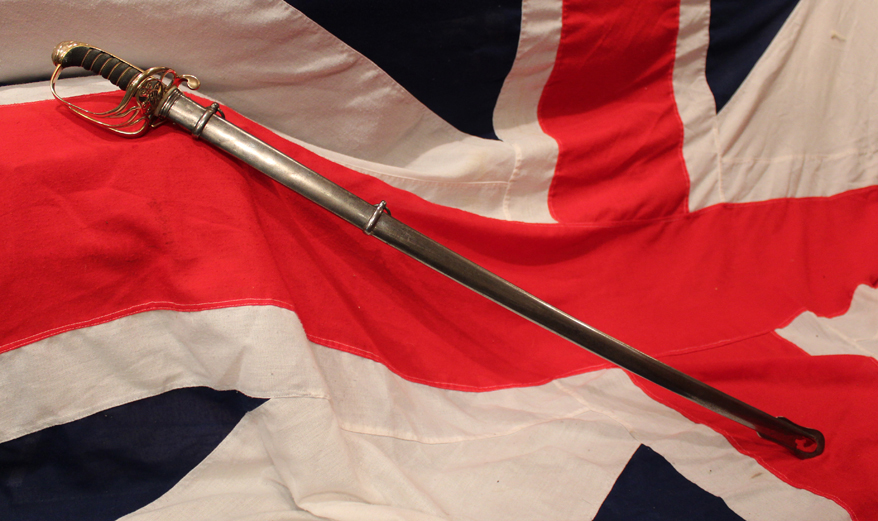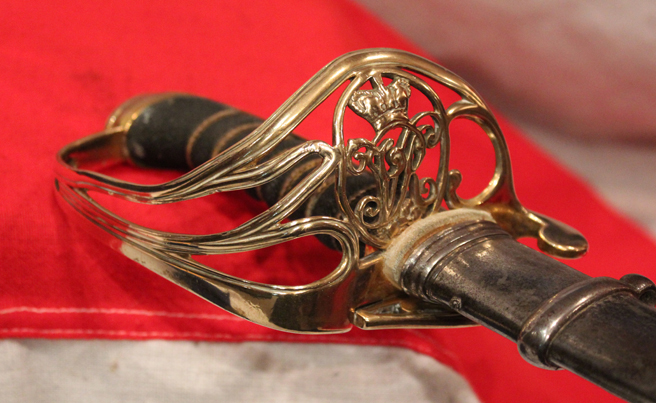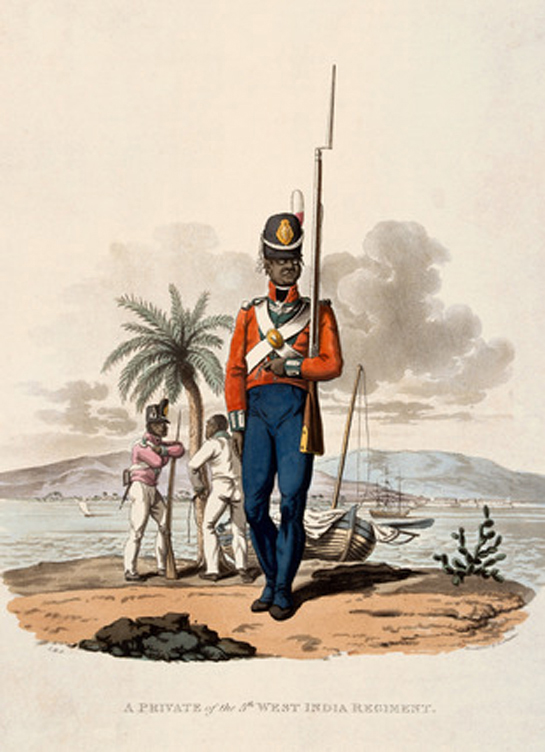A Very Rare and Historical 1822 Presentation Sword to Ensign Alexander Samson of the Caribbean, 1st West India Regt. In 1855, From Col. Lockyer Freestun ‘Great Officer’ of the Knights Hospitallers of Jerusalem. Two Men Of The Regt. Were V.C. Winners
The West Indian Regiment was one of the great British colonial regiments, it was awarded 11 battle honours, and two of its other ranks volunteers, during its most notable history, were awarded the Victoria Cross, the rarest and most valuable medal for valour and gallantry in the entire military world.
The regiment was made up of black volunteers, and was one of the greatest and heroic regiments, fighting in the British Army, first for the King then for the Queen and Country. In many respects this is one of the forgotten historic regiments of the British Army, formed, in greater part, for the benefit of British freed slaves fleeing from the Americas, that was as heroic as the famous, WW2, US Army Airforce and 500 RAF airmen, known as the Tuskegee Airmen, but, around 100 years before.
This is very rare sword indeed, with a fabulous pierced VR Gothic half basket hilt, sharkskin multi wire bound grip, all steel combat scabbard and deluxe grade fully etched blade, presentation inscribed, and it is in simply beautiful condition for its age.
Surviving, antique, British Army, West India Regimental swords are exceptionally rare, but an officer's presentation sword is so rare that this is the first we have ever seen in over 40 years, and it is possible no other surviving example may still be in existance within the collecting world, or even in museum collections.
Presented by a most highly decorated and exceptional army officer who was both a Colonel of The British Army of Queen Victoria, A Colonel of the Spanish Army of The Queen of Spain and a ‘Great Officer’ of the Knights Hospitallers of Jerusalem.
Presented in 1855 by Col William Lockyer Freestun, formerly of the 93rd Highland Regt. Of Foot was also a Colonel in the service of Her Catholic Majesty the Queen Regent of Spain. Who was granted the titles of Knight and Star of the Royal and Distinguished Order of Charles 3rd, Knight of the First Class of the National and Military Order of San Fernando, and Knight of the Royal Order of Isabella the Catholic for his gallantry and approbations in facing the enemy in the field. These orders he was granted permission to accept by Her Majesty Queen Victoria, personally, on August 14th 1840, and with concession and especial mark of Her Royal favour, be thus granted all due titles in Her Majesty's College of Arms. On the 23rd of June 1860 Her Majesty further granted a British Knighthood to Col. Lockyer Freestun who was also a Great Officer of the Knights Hospitallers of Jerusalem.
Ensign Sansom served with much honour in the West Indian Regiment for around 38 years rising to the esteemed rank of Colonel of the regiment. The West India Regiments (WIR) were infantry units of the British Army recruited from and normally stationed in the British colonies of the Caribbean between 1795 and 1927. The new West India Regiments saw considerable service during the period of the Napoleonic Wars, including participation by the First WIR in the occupation of the French island of Marie-Galante in 1808. The Regiments were later involved in the War of 1812, both on the Atlantic coast and in the Gulf of Mexico, taking part in the British attack on New Orleans. In 1800 there were 12 battalion-sized regiments which were seen as valuable also for dealing with revolts in the West Indies colonies. With numbers decreased by the effects of the Slave Trade Act of 1807, there was a shortfall of around five thousand at the start of the War of 1812, and the war offered hope of new recruitment from slaves, yearning to serve as free men, fleeing the United States. However only eight joined the regiments from the Chesapeake Bay area in 1814, and a further thirteen on the coast of Georgia early in 1815. Following the end of the War of 1812, numbers were progressively reduced
incorporating into the 1st West India Regiment the Carolina Corps that had been in existence since 1779, the original intention was both to recruit free black personel from the West Indian population and to purchase slaves from the West Indian plantations. The eighth of the newly raised regiments (Skerrett's) was disbanded the following year but the quality of the new corps led to a further five West India Regiments being raised in 1798.
In 1807 all serving black soldiers recruited as slaves in the West India Regiments of the British Army were freed under the Mutiny Act passed by the British parliament that same year. In 1808 the Abolition Act caused all trading in slaves to be "utterly abolished, prohibited and declared to be unlawful". In 1812 a West African recruiting depot was established on Blance Island in Sierre Leone to train West African volunteers for the West India Regiments. But it needs also to be remembered that we were in the forefront of abolishing the slave trade and that, even as Napoleon threatened our very survival, we devoted a substantial part of the Royal Navy to hunting down and destroying the slave traders. Many British ships and lives were lost in the process. By 1816 the end of the Napoleonic Wars and the reduction of the West India regiments to six enabled this depot to be closed.
The free WIR soldiers became a valued part of the British forces garrisoning the West Indies, where losses from disease and climate were heavy amongst white troops. The black Caribbean soldiers by contrast proved better adapted to tropical service. They served against locally recruited French units that had been formed for the same reasons. Free black Caribbeans soldiers played a prominent and often distinguished role in the military history of Latin America and the Caribbean
The 1st West India Regiment from Jamaica went to the Gold Coast of Africa to fight in the Ashanti War of 1873-4
Battle honours
Dominica, Martinique 1809, Guadeloupe 1810, Ashantee 1873?74, West Africa 1887, West Africa 1892-93 & 94, Sierra Leone 1898
The Great War (2 battalions): Palestine 1917?18, E. Africa 1916-18, Cameroons 1915-16.
Honours and awards
Private Samuel Hodge of the WIR was awarded the Victoria Cross in 1866 for courage shown during the capture of Tubab Kolon in the Gambia. Private Hodge was the second black recipient of this decoration the first being Able Seaman William Hall of the Royal Navy. In 1891, Lance Corporal William Gordon of the 1st Battalion WIR received a VC for gallantry during a further campaign in the Gambia. Promoted to sergeant, Jamaican-born William Gordon remained in employment at regimental headquarters in Kingston until his death in 1922.
Code: 22501
1995.00 GBP







